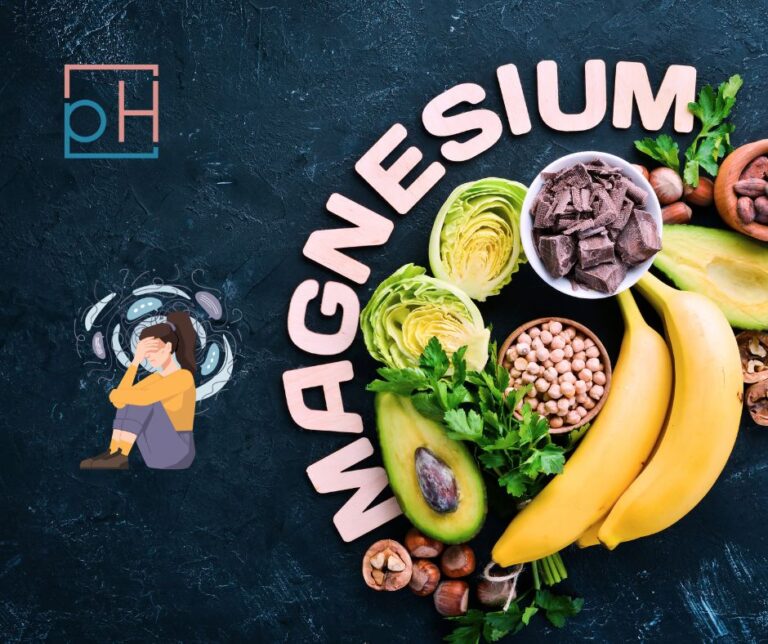The Quiet Revolution on Your Plate: Unearthing the Migraine-Magnesium Link Through Food
The throbbing begins subtly, a faint pressure behind one eye, a whisper of sensitivity to light. For those who know it, this whisper is a harbinger, a dreaded preamble to the symphony of agony that is a full-blown migraine. It’s a pain that transcends the physical, a thief of days, careers, relationships, and peace of mind. The quest for relief becomes an odyssey, traversing pharmaceuticals, obscure therapies, lifestyle overhauls, and the fervent hope for a magic bullet. We, the migraineurs, have swallowed countless pills, endured injections, and meticulously tracked triggers, often feeling like unwitting participants in a cruel, unwinnable game of neurological roulette.
But what if the answer, or at least a significant part of it, isn’t found in a laboratory’s latest concoction, but in the earth’s ancient pantry? What if a quiet revolution against this debilitating condition could begin not with a prescription, but with a conscious choice at the grocery store? This is the story of magnesium, an unsung hero of biochemistry, and its profound, often overlooked, connection to the very foundations of migraine. It’s a story that invites us to look beyond the medicine cabinet and consider the powerful, healing potential residing on our plates.
The Enigma of Migraine: A Brief, Knowledgeable Overview
Before we delve into the potential panacea of magnesium, let’s first acknowledge the formidable adversary we face. Migraine is not merely a severe headache; it is a complex neurological disorder, a symphony of dysfunction affecting sensory processing, blood flow, and neurochemical balance in the brain. It’s characterized by debilitating symptoms far beyond pain: pulsating head pain, often unilateral, accompanied by nausea, vomiting, extreme sensitivity to light (photophobia), sound (phonophobia), and sometimes smell (osmophobia). Approximately one-third of individuals experience an aura – transient neurological symptoms like visual disturbances, numbness, or speech difficulties – preceding the headache phase.
The precise mechanisms are still being unraveled, but current understanding points to a cascade of events involving genetic predispositions, environmental triggers, and the intricate dance of neurotransmitters and blood vessels. Theories include cortical spreading depression (CSD), a wave of neuronal and glial depolarization that sweeps across the cerebral cortex, often linked to aura; the activation of the trigeminal nervous system, releasing inflammatory neuropeptides; and dysregulation of various brain chemicals, particularly serotonin and calcitonin gene-related peptide (CGRP).
For many, conventional treatments, while offering some respite, often fall short. They may manage symptoms, but they rarely address the underlying susceptibilities that make a brain prone to migraine in the first place. This persistent struggle fuels the search for complementary and alternative strategies, bringing us to the quiet, yet powerful, potential of a fundamental mineral: magnesium.
Magnesium: The Unsung Hero of Biochemistry
Imagine a maestro conducting an orchestra of over 300 biochemical reactions in your body, from energy production to DNA synthesis. That maestro, tirelessly working behind the scenes, is magnesium. It is the fourth most abundant mineral in the human body, an essential electrolyte vital for virtually every major metabolic process. Yet, despite its omnipresence and critical roles, magnesium deficiency is surprisingly common, often dubbed the "invisible deficiency" because symptoms can be subtle or mimic other conditions.
So, what exactly does this humble mineral do that makes it so indispensable?
- Energy Production: Magnesium is a crucial cofactor for adenosine triphosphate (ATP), the body’s primary energy currency. Without adequate magnesium, our cells, particularly energy-hungry brain cells, struggle to produce energy efficiently.
- Nerve Function and Neurotransmission: This is where magnesium truly shines in the context of migraine. It plays a pivotal role in regulating nerve impulse transmission, muscle contraction, and heart rhythm. It acts as a natural calcium channel blocker, preventing excessive calcium influx into cells, which can lead to over-excitation and cell damage. Magnesium also influences the activity of numerous neurotransmitters, including serotonin, GABA (gamma-aminobutyric acid), and glutamate.
- Muscle Relaxation: Magnesium works in synergy with calcium to regulate muscle contraction and relaxation. Calcium facilitates contraction, while magnesium promotes relaxation. A deficiency can lead to muscle cramps, spasms, and increased tension – often precursors or accompaniments to migraine.
- Blood Pressure Regulation: Magnesium helps maintain healthy blood vessel tone, promoting vasodilation (widening of blood vessels), which is crucial for optimal blood flow and blood pressure regulation.
- Bone Health: Approximately 60% of the body’s magnesium is stored in bones, contributing to their structural integrity and influencing bone metabolism.
- Stress Response: Magnesium helps regulate the hypothalamic-pituitary-adrenal (HPA) axis, the body’s central stress response system. Chronic stress depletes magnesium, creating a vicious cycle where stress exacerbates deficiency, which in turn amplifies the stress response.
- Insulin Sensitivity and Glucose Metabolism: Magnesium is involved in insulin signaling, making it important for blood sugar control and preventing insulin resistance.
The widespread nature of magnesium’s functions underscores why its deficiency can manifest in such a diverse array of symptoms, from fatigue and muscle weakness to anxiety, insomnia, and, critically, neurological hypersensitivity.
The Hidden Deficiency: Why We’re Falling Short
Given its critical importance, why is magnesium deficiency so prevalent? Several factors contribute to this silent epidemic:
- Modern Agricultural Practices: Soil depletion due to intensive farming methods has reduced the magnesium content in many crops.
- Processed Foods: Refining processes strip foods of their natural magnesium content. A diet rich in processed foods is inherently magnesium-poor.
- Stress: Physical and psychological stress increases the body’s demand for and excretion of magnesium.
- Medications: Certain drugs, including proton pump inhibitors (PPIs), diuretics, and some antibiotics, can interfere with magnesium absorption or increase its excretion.
- Digestive Issues: Conditions like Crohn’s disease, celiac disease, or chronic diarrhea can impair magnesium absorption.
- Alcohol Consumption: Alcohol increases magnesium excretion by the kidneys.
- Chronic Diseases: Diabetes, kidney disease, and heart disease can impact magnesium status.
The cumulative effect of these factors means that many individuals, especially those living in fast-paced, modern societies, may be operating with suboptimal magnesium levels without ever realizing it.
Forging the Link: Magnesium and Migraine
The connection between magnesium and migraine is not a new age conjecture; it is rooted in solid biochemical and physiological principles. For decades, researchers have observed that individuals who suffer from migraines often exhibit lower levels of magnesium in their blood, saliva, and cerebrospinal fluid compared to healthy individuals. But how does this deficiency translate into the unique torment of a migraine attack?
Several compelling theories explain magnesium’s crucial role in migraine pathogenesis:
- Vascular Regulation: Migraine is often associated with dysregulation of cerebral blood vessels – initial vasoconstriction (narrowing) followed by rebound vasodilation (widening). Magnesium, as a natural vasodilator, helps relax blood vessels, improving blood flow and potentially preventing the initial vasoconstrictive phase that can trigger an attack. Low magnesium can lead to cerebral vasoconstriction and increased platelet aggregation, both implicated in migraine.
- Neurotransmitter Modulation:
- Serotonin: Serotonin levels fluctuate significantly during a migraine attack. Magnesium is essential for the proper functioning of serotonin receptors and helps regulate serotonin release. A deficiency can disrupt this delicate balance.
- Glutamate: Glutamate is an excitatory neurotransmitter. Excessive glutamate activity can lead to neuronal hyperexcitability, a hallmark of cortical spreading depression (CSD) – the neurological event underlying migraine aura. Magnesium acts as an antagonist at the NMDA (N-methyl-D-aspartate) receptor, a key glutamate receptor, thereby dampening neuronal over-excitation.
- GABA: GABA is the primary inhibitory neurotransmitter in the brain, helping to calm neuronal activity. Magnesium enhances GABAergic function, promoting a more balanced, less excitable neurological state.
- Cortical Spreading Depression (CSD) Prevention: CSD is a wave of electrical activity that propagates across the brain’s cortex and is strongly linked to migraine aura and potentially the headache phase. Magnesium helps stabilize neuronal membranes and prevent the uncontrolled firing of neurons that initiates CSD. By blocking calcium channels and antagonizing NMDA receptors, magnesium makes neurons less susceptible to this electrical storm.
- Mitochondrial Function and Energy Metabolism: Migraineurs often exhibit signs of mitochondrial dysfunction, suggesting impaired energy production in brain cells. As a vital cofactor for ATP production, magnesium is critical for maintaining robust mitochondrial health and energy supply. A deficiency can compromise neuronal energy reserves, making the brain more vulnerable to stress and triggers.
- Inflammation: Neuroinflammation is increasingly recognized as a key player in migraine. Magnesium possesses anti-inflammatory properties, helping to modulate inflammatory pathways and reduce the overall inflammatory burden on the brain.
- Electrolyte Balance: Magnesium works in concert with other electrolytes like calcium, potassium, and sodium. A disruption in this delicate balance, often caused by magnesium deficiency, can lead to neuronal instability and increased excitability.
Clinical studies, while varied in methodology and magnesium forms used, generally support the prophylactic benefits of magnesium supplementation for migraine. Several meta-analyses have concluded that magnesium can significantly reduce the frequency and intensity of migraine attacks, particularly in individuals with aura or menstrual migraines. The evidence is compelling enough for organizations like the American Headache Society to include magnesium as a recommended preventative treatment.
While supplementation has its place, particularly in acute situations or for those with severe deficiencies, the focus of our story remains on a more sustainable, holistic approach: harnessing the power of food.
The Culinary Prescription: Eating Your Way to Relief
The idea of "food as medicine" is ancient, but in our modern, pill-centric world, it often feels revolutionary. For migraineurs, embracing a magnesium-rich diet isn’t just about symptom management; it’s about reclaiming agency, fostering a deeper connection with our bodies, and discovering the profound synergistic benefits that whole foods offer. When we eat magnesium-rich foods, we’re not just getting magnesium; we’re also consuming a symphony of other vitamins, minerals, fiber, and antioxidants that work together to support overall health and neurological resilience. This approach is sustainable, enjoyable, and free from the side effects often associated with pharmaceuticals.
So, let’s explore the earth’s bounty and identify the culinary champions that can help turn the tide against migraine:
-
Dark Leafy Greens: The Verdant Powerhouses
- Spinach, Kale, Swiss Chard, Collard Greens: These are perhaps the most celebrated sources of magnesium. A single cup of cooked spinach can provide over 150 mg of magnesium. They are also packed with fiber, vitamins A, C, K, and folate, contributing to overall well-being and reducing inflammation.
- How to Enjoy: Blend into smoothies, sauté with garlic as a side dish, add to soups, stews, or omelets, or use as a base for vibrant salads.
-
Nuts and Seeds: Crunchy, Convenient Magnesium Bombs
- Pumpkin Seeds: The undisputed king, with nearly 150 mg of magnesium per ounce (a quarter cup).
- Almonds: About 75 mg per ounce.
- Cashews: Roughly 73 mg per ounce.
- Chia Seeds & Flax Seeds: Excellent sources, offering fiber and omega-3 fatty acids too.
- How to Enjoy: Snack on a handful, sprinkle over salads, yogurt, or oatmeal, blend into nut butters, or use in homemade granola.
-
Legumes: Earth’s Hearty Gift
- Black Beans, Lentils, Chickpeas, Edamame: These versatile plants are not only rich in plant-based protein and fiber but also provide substantial magnesium. A cup of cooked black beans offers about 120 mg of magnesium.
- How to Enjoy: Make into hearty soups, stews, curries, dips (like hummus), add to salads, or mash into veggie burgers. Soaking and sprouting can improve nutrient availability.
-
Whole Grains: The Foundation of Sustained Energy
- Quinoa, Brown Rice, Oats, Whole Wheat (in moderation for some): While not as concentrated as leafy greens or seeds, whole grains contribute significantly to daily magnesium intake, especially when consumed regularly. A cup of cooked quinoa provides about 118 mg. They also offer complex carbohydrates for sustained energy and fiber for gut health.
- How to Enjoy: Opt for whole-grain bread and pasta, start your day with oatmeal, use quinoa as a base for meals, or incorporate brown rice into stir-fries.
-
Avocado: The Creamy, Nutrient-Dense Delight
- This fruit is a treasure trove of healthy monounsaturated fats, potassium, and yes, magnesium. One medium avocado contains approximately 58 mg of magnesium.
- How to Enjoy: Mash into guacamole, slice onto toast, add to salads, or blend into creamy dressings and smoothies.
-
Dark Chocolate: The Indulgent Healer
- Good news for chocolate lovers! Dark chocolate (with at least 70% cacao) is a surprisingly rich source of magnesium. An ounce can provide around 64 mg, along with powerful antioxidants.
- How to Enjoy: Savor a square or two as a mindful treat, melt into a healthy hot cocoa, or chop and add to oatmeal. Remember, quality over quantity!
-
Bananas: More Than Just Potassium
- While famous for potassium, a medium banana also contributes about 32 mg of magnesium.
- How to Enjoy: A quick snack, added to smoothies, or sliced over cereal.
-
Tofu and Tempeh: Plant-Based Protein with a Magnesium Boost
- For those following a plant-based diet, these soy-based products are excellent sources of magnesium. A half-cup serving of firm tofu contains about 58 mg.
- How to Enjoy: Stir-fries, baked, grilled, or crumbled into scrambles.
-
Fatty Fish: While not the highest in magnesium directly, fish like salmon, mackerel, and halibut offer other brain-supportive nutrients like omega-3 fatty acids and vitamin D, which work synergistically to reduce inflammation and improve overall neurological health, indirectly supporting magnesium’s efforts.
Crafting a Magnesium-Rich Lifestyle: Tips for Maximizing Intake and Absorption
- Prioritize Whole Foods: Make unprocessed foods the cornerstone of your diet.
- Embrace Variety: Don’t rely on just one or two sources. A diverse diet ensures a wide array of nutrients.
- Soak and Sprout: For legumes and grains, soaking, sprouting, or fermenting can reduce phytates, compounds that bind to minerals and hinder absorption.
- Cook Gently: Excessive boiling can leach water-soluble minerals like magnesium from vegetables. Steaming or light sautéing is preferable.
- Mind Your Gut: A healthy gut microbiome is essential for nutrient absorption. Incorporate fermented foods (kimchi, sauerkraut, yogurt) and fiber-rich foods to support gut health.
- Limit Inhibitors: Reduce intake of processed foods, excessive sugar, alcohol, and caffeine, which can deplete magnesium or hinder its absorption.
- Hydrate Smart: Some mineral waters are naturally rich in magnesium. Check the labels.
Beyond the Plate: A Holistic Approach
While diet is a powerful lever, the migraine-magnesium link thrives within a broader holistic framework. Magnesium deficiency is often intertwined with other lifestyle factors that contribute to migraine susceptibility.
- Stress Management: Chronic stress is a notorious magnesium depleter. Incorporate stress-reducing practices like mindfulness meditation, yoga, deep breathing exercises, spending time in nature, or engaging in hobbies that bring joy.
- Quality Sleep: Sleep deprivation is a major migraine trigger. Prioritize 7-9 hours of restorative sleep each night. Magnesium can also aid sleep by promoting relaxation and regulating neurotransmitters.
- Regular Exercise: Moderate, consistent physical activity can reduce migraine frequency and severity by improving circulation, reducing stress, and releasing endorphins.
- Adequate Vitamin D: Vitamin D plays a synergistic role with magnesium in numerous bodily functions, including immune health and inflammation. Ensure adequate sunlight exposure or consider supplementation under medical guidance.
- Patience and Persistence: Dietary changes are not a magic bullet. It takes time for the body to replenish magnesium stores and for the neurological system to rebalance. Consistency is key, and results may manifest gradually over weeks or even months. Keep a food and migraine diary to track progress and identify patterns.
- Consult Professionals: Always consult with a healthcare provider, especially if you have underlying health conditions or are taking medications. A registered dietitian can provide personalized dietary advice, and a doctor can assess your magnesium levels and advise on potential supplementation if dietary changes aren’t sufficient. While this article focuses on food, professional guidance is paramount.
Potential Pitfalls and Considerations
It’s important to approach the magnesium-migraine link with an informed perspective:
- Individual Variability: What works for one person may not work for another. Migraine is highly individualized, and magnesium may be a more significant factor for some than for others.
- Not a Sole Cure: While powerful, magnesium is rarely the only answer. It should be seen as a crucial piece of a larger puzzle that includes other dietary factors, lifestyle adjustments, and potentially medical interventions.
- Supplements vs. Food: While food is the preferred source due to synergistic nutrients and better absorption, magnesium supplements (e.g., magnesium citrate, glycinate, or threonate) can be beneficial for those with severe deficiencies or who struggle to meet needs through diet alone. Always consult a doctor before starting supplementation, as excessive doses can cause gastrointestinal upset.
- Excess Magnesium from Food: It is extremely rare to consume too much magnesium from food alone, as the kidneys efficiently excrete any excess. Symptoms of excess magnesium (primarily diarrhea) are almost exclusively associated with high-dose supplementation.
Conclusion: The Quiet Revolution on Your Plate
The journey through chronic migraine is often fraught with despair, frustration, and a relentless search for relief. But within the quiet hum of our daily choices lies a profound opportunity for healing. The migraine-magnesium link, illuminated by science and amplified by the wisdom of whole foods, offers a compelling narrative of empowerment. It reminds us that our bodies are intricate ecosystems, capable of remarkable resilience when nourished appropriately.
By consciously choosing to incorporate magnesium-rich foods into our diets – by embracing the vibrant greens, the hearty legumes, the crunchy nuts, and even a square of dark chocolate – we embark on a quiet revolution. We move from passive suffering to active participation in our own well-being. This isn’t just about eating to prevent a headache; it’s about eating to cultivate a more balanced, resilient nervous system, to dampen the electrical storms, and to restore a sense of calm to a brain often besieged by chaos.
So, for those who have walked the arduous path of migraine, consider this an invitation. An invitation to explore, to experiment, to savor, and to rediscover the profound healing potential that lies, quite literally, on your plate. The quiet revolution has begun, and it tastes delicious.







